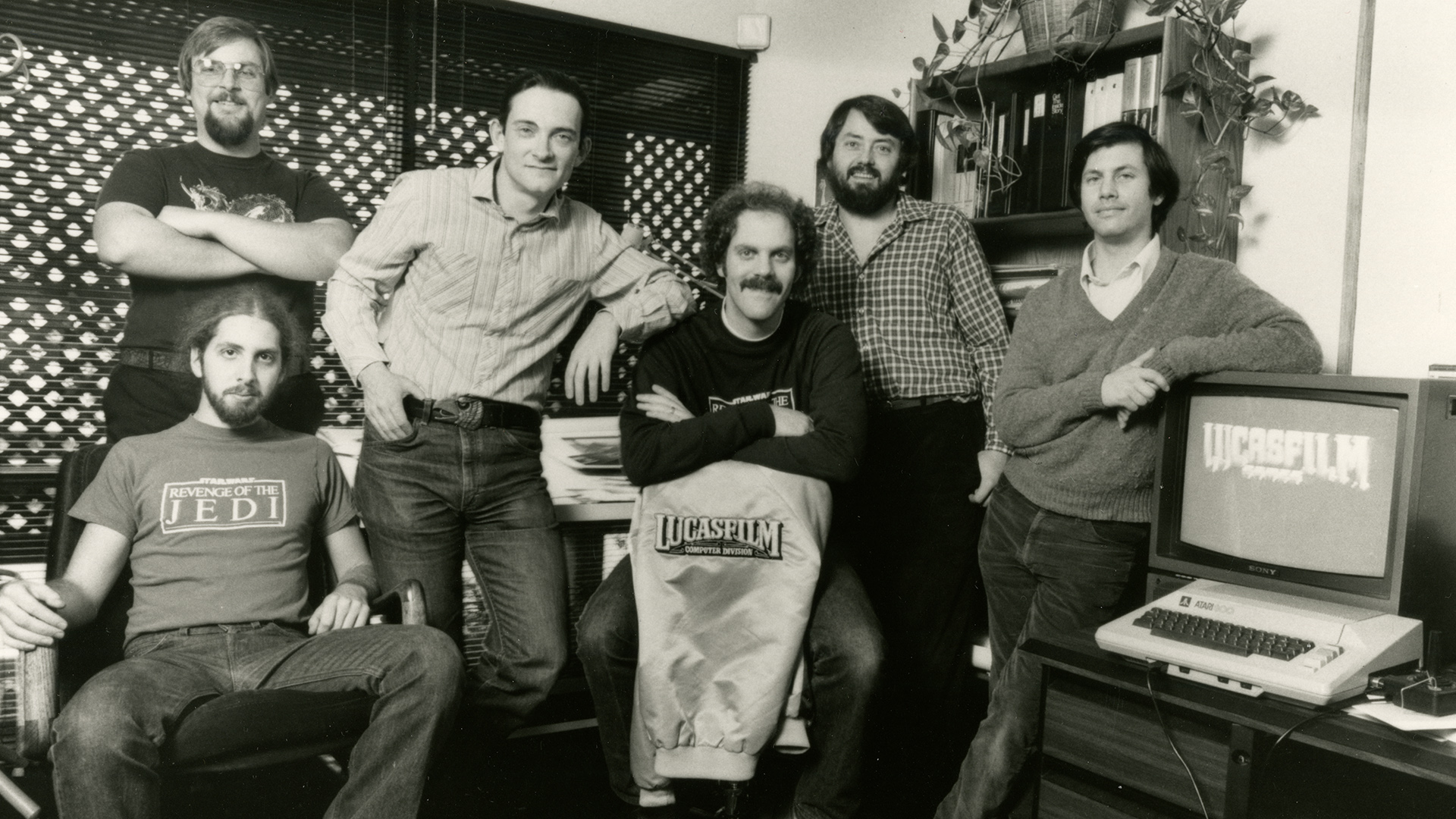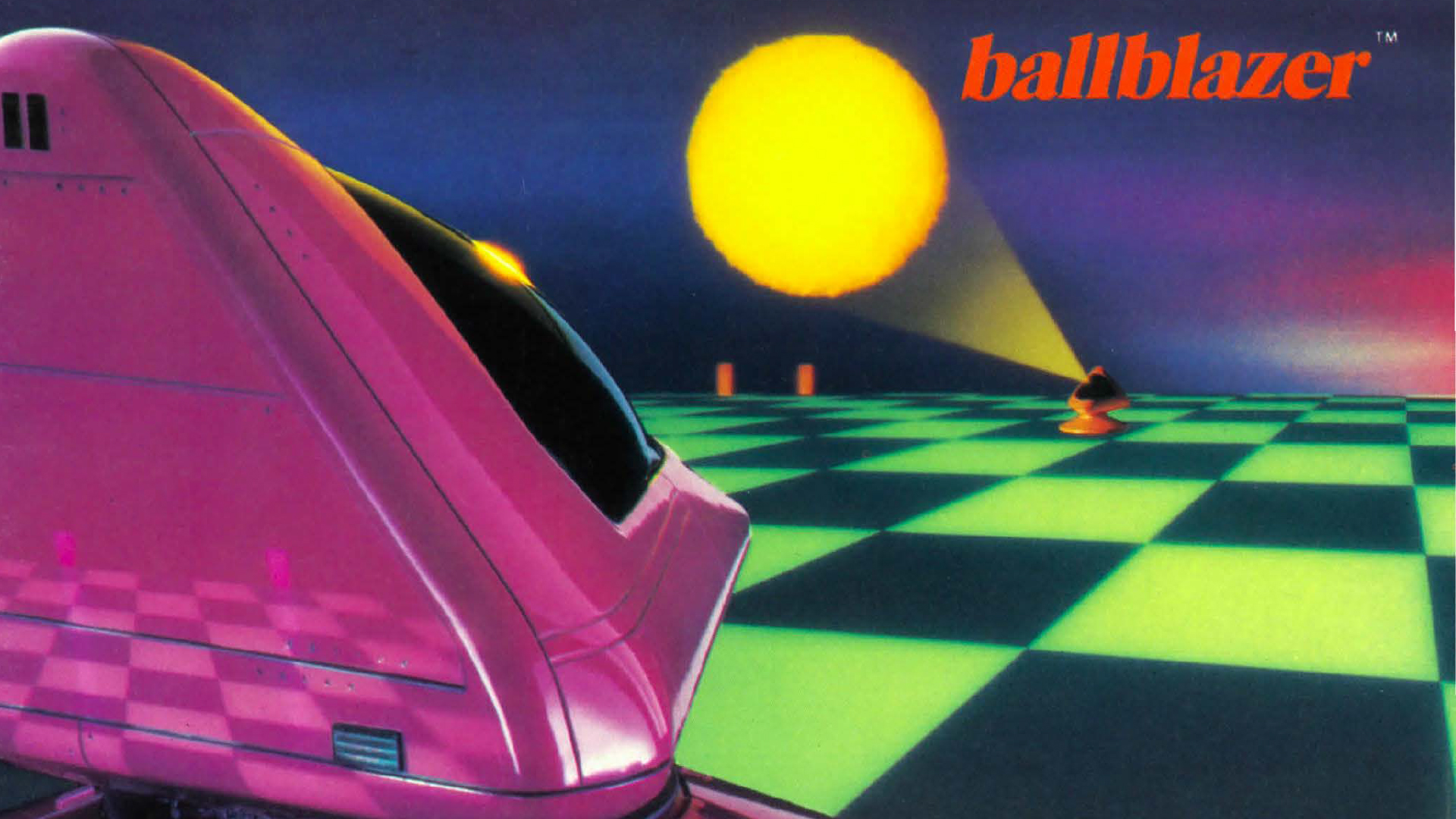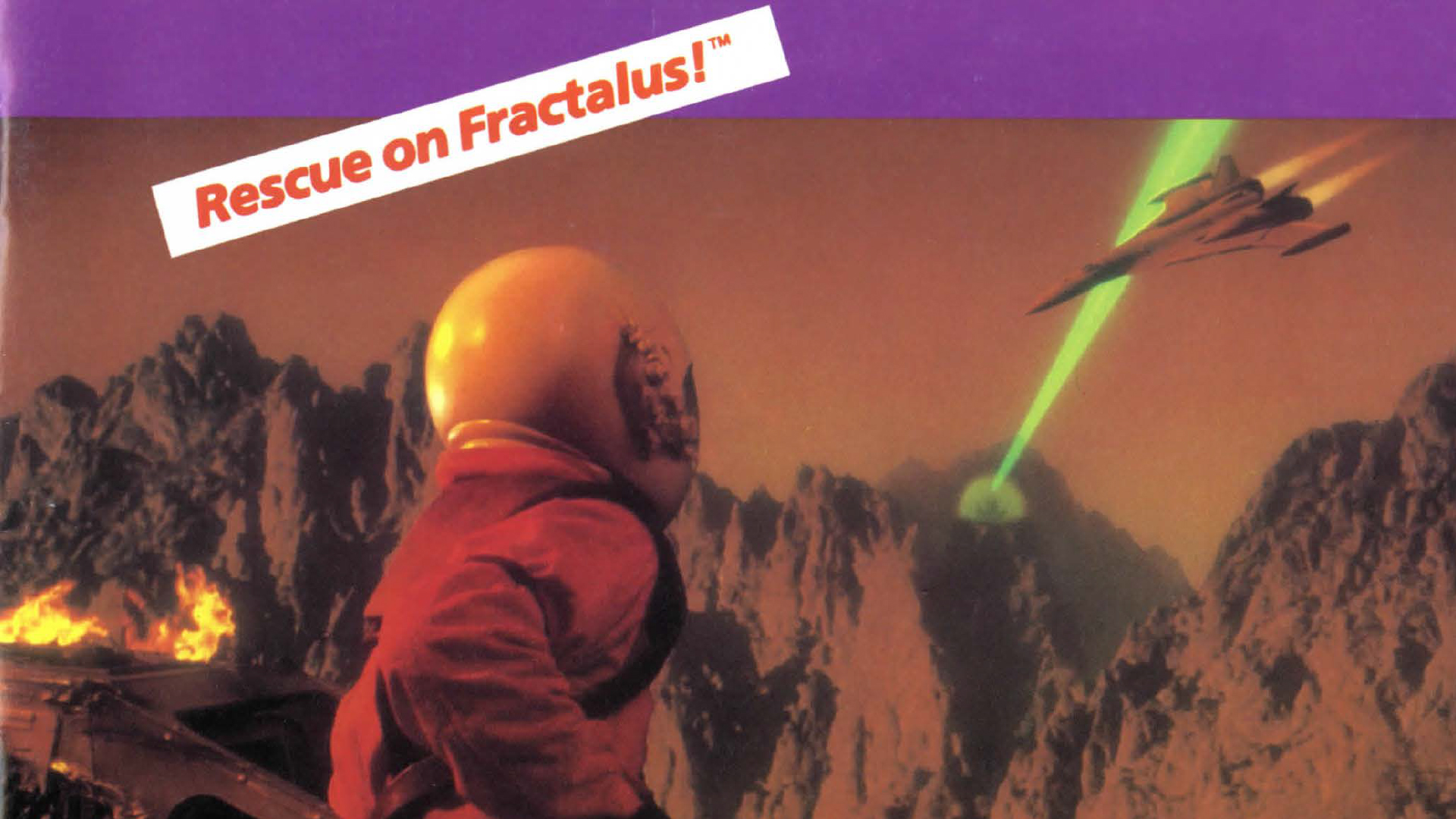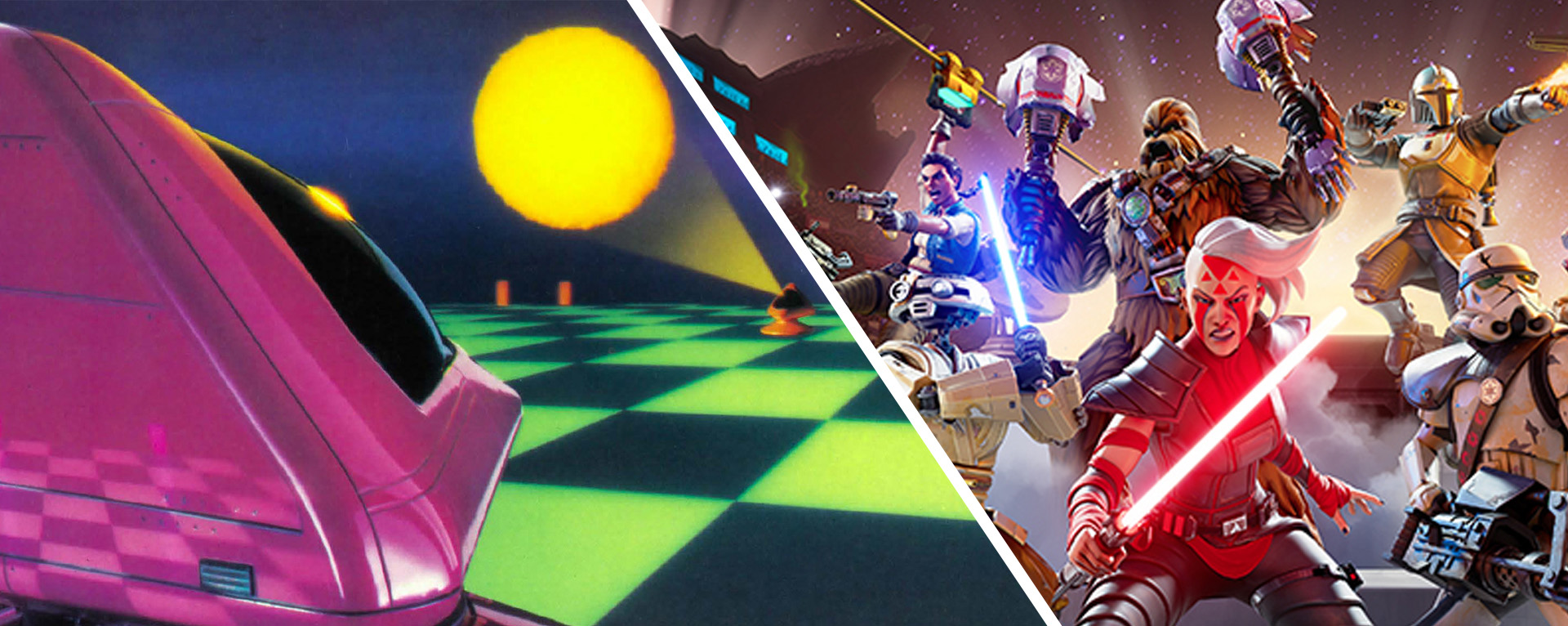40 Years Later: Lucasfilm Games Starts a New Era
One of Lucasfilm’s Oldest Divisions Honors its Past and Prepares for the Future
In 1982, less than ten designers and programmers organized as Lucasfilm Games, then a sub-group within the company’s larger Computer Division. Although their numbers were small, their ambitions to create entertaining games was far-reaching. 40 years and hundreds of titles later, that legacy remains top of mind for the current members of Lucasfilm Games.
Just last year, the group officially returned to its original imprint, something vice president Douglas Reilly finds appropriate. “What we are today is a little similar to the original Lucasfilm Games team,” he explains. “We have 20-odd people working to create these new experiences. We’re not a full development studio with hundreds of people. It’s much more like that scrappy group of rebels back in the 1980s.”
For Reilly, every project can be informed by the group’s legacy in large or small ways. 2020’s Star Wars: Squadrons – a collaboration with Motive Studios and Electronic Arts – was inspired in part by the fan-favorite X-wing and TIE Fighter computer games of the 1990s. “If you look at what we’re doing with the remake of Knights of the Old Republic,” Reilly adds, “in my mind, that’s the greatest Star Wars game that’s ever been made. This is now an opportunity to bring that classic title to folks who weren’t even alive when that game first came out, and do it with new techniques that we have today.”
For Reilly, the work at Lucasfilm Games is “a constant exercise of looking forward to new and original creative expressions, but always through the lens of players’ expectations and the history of things we’ve done in the past.”
As executive producer Craig Derrick puts it, inspiration comes from the trailblazing and pioneering work of that early team. “They had an idea that games could live side by side with everything else that Lucasfilm had been creating to date,” he explains. “There was Star Wars, Industrial Light & Magic, and so much else going on. George Lucas understood that in games was another medium for storytelling. It’s extraordinary to imagine the opportunity and pressure for that first group at Lucasfilm Games.”
As Derrick notes, in their earliest years, the group could not make games in the Star Wars galaxy, and instead had to devise their own original ideas for stories. “They had to build something from the ground up,” he says. “They had to be their own storytellers and make something that would surprise and delight players.” That challenge led to iconic titles like 1987’s Maniac Mansion and 1990’s The Secret of Monkey Island. By their second decade, Lucasfilm Games (renamed LucasArts for the next 20-odd years) had begun contributing to Star Wars, but as Derrick points out, that need to innovate and “further the medium of interactive storytelling” would remain key to their success.
Now in 2022, a number of Lucasfilm Games’ most successful titles continue to surprise and delight players with new releases and expansions. Among them is Star Wars: The Old Republic, the massively-multiplayer online roleplaying game made in partnership with BioWare Austin and Electronic Arts that recently celebrated its own tenth anniversary. The idea of giving Star Wars fans their own character and the ability to make their own choices is something that makes this beloved distinct. As play continues, these choices can “have impact stretching over years and years,” as executive producer Orion Kellogg notes. “Will you embrace the light, wield the power of the dark side, or are you still perhaps on a journey of self-discovery? Choices with impact are at the heart of all good Star Wars storytelling and all good interactive gaming experiences, especially one where you can square off against other players or join them as companions and guildmates with similar values.”
Another special component of The Old Republic is community, one that involves not only creators like Kellogg, but the many players who’ve stayed loyal to the game over ten-plus years. “It’s no surprise that a huge and passionate community has formed around the game, active both online and off,” adds Kellogg. “We’re always listening to that community for ideas and inspiration—we have some of the best cosplayers in games—and are happy to celebrate this ten-year milestone with them.”
All of Lucasfilm Games’ projects, from The Old Republic to the LEGO Star Wars series, are collaborations with outside partners who lead the production of titles under Lucasfilm’s supervision. A number of these partners, such as Electronic Arts, remain partners on multiple projects for successive years. One of the advantages of long-term relationships is an improved shorthand between the groups, as executive producer Matthew Fillbrandt explains. “We learn each other’s needs and develop this mutual trust,” he says. “We learn to provide them with what they need so we can get out of their way and let them do what they do best. From one game to another, we build on our past experience and try to make things better.”
As Fillbrandt continues, “our partners also learn Star Wars better over time. Our fans have certain expectations. We want to squeeze every drop of Star Wars that we can out of each game. Every new title with a certain partner has the potential to be better and better.” This collaborative ethos also influences the continuing search for new partners. “You don’t want to put the same kind of game out every time,” says Fillbrandt. “Not everyone likes the same kind of game, so we look to partner with the best people for every kind of game. We find people who have passion to make something. If there’s a will, there’s a way.”
One of the team’s longest ongoing partnerships is with LEGO and TT Games on the beloved LEGO Star Wars titles, including the brand-new LEGO Star Wars: The Skywalker Saga, which fans at Star Wars Celebration will be able to experience on the show floor. “That relationship has been invaluable at bringing kids and families – fans who might not be core gamers – into Star Wars gaming,” says Douglas Reilly. “It’s fun, accessible, and light-hearted. It gives us creative license to do something different. We hear countless stories of parents and kids playing together. That is very unusual for video games. This cross-generational appeal is like the peanut butter and chocolate of what makes LEGO Star Wars work.
In collaboration with Zynga and NatrualMotion, Craig Derrick “wanted to do something different” with Star Wars: Hunters, another title that attendees at Celebration. “I thought that sometimes we didn’t have enough fun with Star Wars. An important rule that goes back to the earliest days of Lucasfilm Games is to keep your sense of humor. One of the concepts that we talked about with Hunters was to portray a world outside of the events of the Star Wars films, one occupied by people just like you and me living in the galaxy. Those people need entertainment too! What could that look like?”
The resulting game is part sporting event, part entertainment venue that utilizes what Derrick calls “known Star Wars archetypes.” New characters feel authentic to the galaxy far, far away in this “game within a game” akin to the theatrics of professional wrestling. “It’s a theatrical sport,” he says. “We have a droid that thinks it’s a Jedi. They have no Force powers, but instead they use augmented abilities. The droid is kind of like a rodeo clown, and they don’t actually realize that they’re not a Jedi!” Others include a dark side user with a “punk rock” flavor of showmanship. “Everything has a slight twist,” Derrick teases.
Another game coming to Celebration is a fan-favorite, one that Matthew Fillbrandt describes as “our most successful mobile title to date,” Star Wars: Galaxy of Heroes. Orion Kellogg adds that “we’ve been delighted to work with our friends at Capital Games to offer an engaging, social experience that really embraces Star Wars fandom. We have a huge collection of ships, characters, and environments to play with across many different game modes, ranging from toybox free-for-alls for the armchair general, squad challenges that use synergies to reward Star Wars experts, and lovingly crafted storytelling moments for the fan that wants to push their mobile device to the cutting edge.”
The start of this new era for Lucasfilm Games is not only defined by the group’s reverence for its past, but also its connection to Lucasfilm as a whole. “All of the stories we tell are part of the greater Star Wars timeline,” notes Douglas Reilly, “and we are tying into our television series or comic books. Rather than being a separate division, we’re part of Lucasfilm in a more direct way. We’re also working on Indiana Jones and other projects. That’s part of why it feels right to get back to this name after 40 years.”




